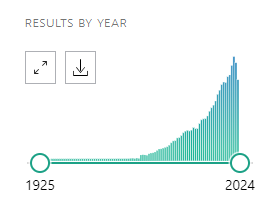Understanding Heart Rate Variability: Eight Key Health Indicators
Written on
Chapter 1: The Essence of Heart Rate Variability
Heart Rate Variability (HRV) is an insightful measure that reflects the complex interplay of our heartbeat intervals. More than just a pulse check, HRV captures the subtle fluctuations in time between successive heartbeats, providing a dynamic lens into our health and wellness. It serves as a vital indicator of how our body adapts to various stressors, revealing insights about our physiological, emotional, and psychological resilience.
As highlighted in a study published by MDPI, HRV analysis has become increasingly relevant in diagnosing various clinical conditions over the past decade. Similarly, research from Frontiers notes that HRV arises from intricate cardiac-brain interactions and the non-linear processes of the autonomic nervous system.
Another Frontiers paper indicates that as our understanding of HRV has evolved alongside modern physiology, its clinical applications have expanded significantly since its initial discovery in 1847. Today, HRV measurement can be conducted over both short (5-10 minutes) and extended (12-24 hours) intervals.
The exploration of HRV has indeed progressed over decades, initially recognized through early ECG recordings, and has gained considerable traction in the fields of cardiology, stress management, sports medicine, and cognitive psychology. The rise of wearable technology and online platforms has further democratized HRV tracking, allowing individuals to monitor their health proactively.
In recent years, research has broadened the scope of HRV, investigating its role in stress management, mental health, cardiovascular wellness, sleep disorders, aging, and overall health. This ongoing inquiry underscores HRV's potential as a diagnostic tool and its significance in predicting various health conditions.

The National Library of Medicine has documented substantial progress in HRV research over the last three decades, with a notable spike in 2021, coinciding with investigations related to COVID-19.
In the following sections, I will delve into eight essential health indicators associated with HRV variations based on my research and personal experiences. For those interested in further details, I will provide relevant scientific references at the end of this discussion.
Chapter 2: Eight Health Indicators of HRV Variations
1 — Stress Levels
HRV serves as a crucial marker of the body's stress response, and I have leveraged it for stress management for many years. During my experience with COVID-19 in August 2022, I observed significant changes in my HRV, reflecting how the body adapts to infection and stress. Tracking HRV can provide valuable insights into recovery and overall health status.
HRV reflects the time intervals between heartbeats, offering a glimpse into the balance between the sympathetic (fight or flight) and parasympathetic (rest and digest) branches of the autonomic nervous system. Low HRV typically indicates increased stress and a sympathetic dominance that can adversely affect health.
2 — Autonomic Nervous System Balance
As previously noted, HRV provides insight into the balance between the two branches of the autonomic nervous system. A higher HRV signifies a healthier equilibrium, which enhances resilience against physical, emotional, and psychological stressors. Conversely, a lower HRV may indicate an imbalance, suggesting a greater susceptibility to stress-related conditions.
3 — Cardiovascular Health
In discussions with my cardiologist, HRV emerged as a vital tool for assessing cardiovascular health. Variations in HRV are linked to numerous cardiovascular issues, including heart disease and hypertension. Regular monitoring of HRV can aid in early risk identification and support proactive health interventions.
The first video, "Everything You Should Know About Heart Rate Variability (HRV)," explores the significance of HRV in health assessments and its implications for cardiovascular wellness.
4 — Cognitive Function and Mental Health
My exploration into HRV's impact on cognitive abilities revealed compelling links between HRV and various mental health conditions. Research indicates that lower HRV is often associated with challenges such as depression, anxiety, and PTSD. Understanding these relationships can aid in early interventions and holistic mental health approaches.
5 — Chronic Diseases
HRV patterns have been observed to change in several chronic conditions, including chronic fatigue syndrome and autoimmune diseases. Monitoring HRV can offer insights into autonomic function and help clinicians assess disease progression and treatment efficacy.
6 — Sleep Disorders
My HRV measurements have proven invaluable in addressing sleep issues. Variations in HRV are linked to disorders such as sleep apnea and insomnia, making HRV tracking a useful tool for sleep health assessments.
7 — Fitness and Training Response
Athletes frequently utilize HRV to gauge their recovery and readiness for training. A higher HRV often indicates better fitness and adaptation to training loads, allowing for optimized performance while minimizing injury risk.
8 — Aging
Over time, I have observed a gradual decline in my HRV, reflecting the natural aging process. Monitoring HRV can provide insights into age-related health risks, offering opportunities for proactive health management.
Measuring Heart Rate Variability
Medical professionals typically use ECG, SCG, and GCG signals for HRV measurement. However, individuals can also track HRV at home using various available devices, including those that connect to smartphones or computers.
To find suitable HRV monitoring devices, consider searching for brands like Optimal HRV, Inner Piece, and Polar H10, among others, to find one that fits your needs and budget.
Conclusions and Takeaways
HRV presents a valuable perspective on various health conditions, although it should not be viewed as the sole diagnostic tool. Instead, it complements other health assessments to provide a holistic view of well-being.
Low HRV values (below 50 ms) suggest increased stress or health concerns, while higher values (above 70 ms) indicate better health and relaxation. For more tailored insights, consulting healthcare professionals or utilizing trusted HRV monitoring tools is advisable.
For further reading on HRV metrics, consider checking out a review paper published in Frontiers. Thank you for engaging with my insights, and I wish you a healthy and fulfilling life.
To explore more of my articles on health, wellness, and related topics, feel free to browse my publications.
The second video, "Why Is My HRV So Low? | Everything You Need To Know About Heart Rate Variability," discusses factors that can affect HRV and its implications for health.